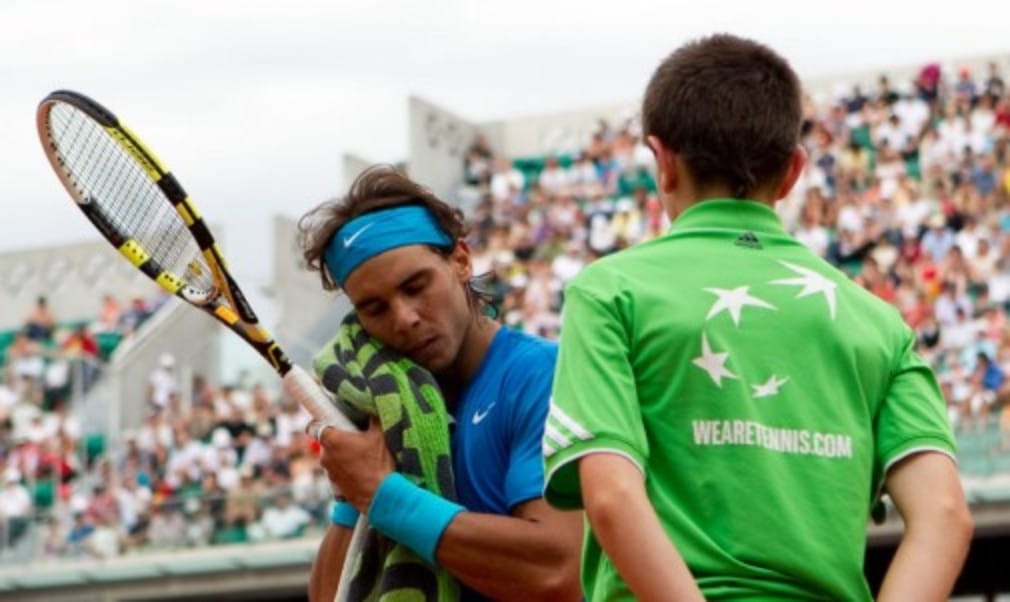
How routines are key to successful performances
Originally published on 01/08/13
When it comes to tennis, rituals are everywhere. Whether it’s Novak Djokovic repeatedly bouncing the ball before he serves, Marion Bartoli vigorously shadow-swinging in between points or Rafael Nadal meticulously lining up his water bottles before he leaves his chair, every player has their own unique idiosyncrasies.
Rituals focus a player’s mind and puts them in control of their thoughts. Hitting a serve in a practice match is the same serve a player must hit at 5-5, 30-30 in the third set of a final, only the scenario has changed. The ball, the racket, and the court dimensions all remain the same and rituals help focus a player’s thoughts on the familiarity of the task rather than the situation.
“Rituals are routines,” says sports psychologist Roberto Forzoni, who has worked with a number of leading British players including Andy Murray. “Routines are key to any successful performance and are quite different from superstitions. Superstitions are probably irrational thoughts.”
Superstitions have been part of tennis since the days of Fred Perry who supposedly wouldn’t shake anyone’s hand before a match for fear of losing the feeling in his fingers. His equivalents in the modern game don’t fare much better when it comes to these so-called fallacies. Maria Sharapova, for example, can be seen stuttering around the court in between points as she attentively avoids stepping on the court markings.
“A player needing to be last on court or who won’t walk on tramlines, they’re just ridiculous superstitions, whereas a routine is something you do over and over again that gets you where you want to be when you want to be there,” said Forzoni. “It’s like getting players to look at their strings. What is the meaning behind it? Does it anchor them in to do something specific? If it doesn’t it’s a waste of time. If it does then it’s very useful.”
Rituals eventually come naturally to players with experience but, like technique, they need to be practiced. Players need to figure out what works and should use them whenever they step on the court – not just during competition.
“You need to [practice rituals] during training as well,” explained Forzoni. “I’ve worked with players who will try and use a routine in a match that they don’t practice in training and it doesn’t work because they haven’t practiced it.
“Certainly I wouldn’t try anything new with a player [mid-tournament],” he added. “A player might be feeling nervous, they’ll get to a final and ask me to work with them but it’s not going to benefit them much. A routine is what I do to give myself the best chance of giving the best performance today so I want to do that in training, in the first round and in the final.”
Sport is all about being as good as you can be throughout each and every moment and having the concentration and confidence to use your skills to their full extent in spite of the pressure. This philosophy requires bravery, the bravery to control your fear and to play freely without the tension that fear imposes – to PlayBrave.
This article appeared in tennishead Volume 4 Issue 4. Subscribe to the magazine today or download tennishead on iTunes.


